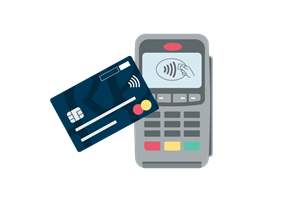The basics of borrowing
All the ways you can borrow money, and other things you need to know.
Overdraft
An overdraft lets your account balance go below £0.
There are two kinds - arranged and unarranged.
An overdraft lets your account balance go below £0.
An arranged overdraft is agreed with us up to a set limit. You can borrow from it any time, as long as you stay within your limit.
With a Freedom account, the arranged overdraft is free to use, but with other accounts they cost money, just like loans and credit cards. Your Freedom account doesn’t automatically come with an arranged overdraft – you have to apply for it, and you may have to pay back anything you’ve borrowed in one go.
Your account goes into unarranged overdraft when you spend more than you've got. In other words, either below £0 or beyond your overdraft.
if you don’t have enough money in your account to cover a payment when it’s due, it may be returned. This means it doesn’t come out at all, and remains unpaid. Your account balance won’t dip below zero, but you’ll still owe the money to whoever was trying to take it.
They might try to take it again before you can lodge money to cover the payment. You may also breach an agreement – for example if you miss a car insurance payment, you might not be technically allowed to drive.
Long story short – it’s best to make sure you have enough money to pay your bills.
An overdraft is a form of borrowing and can cost money.

Credit cards
A credit card lets you borrow from the credit card provider, up to your agreed ‘credit limit’.
You must make at least the monthly minimum repayment. Your credit card company will tell you this in advance.
It’s best to clear your balance in full every month, or credit cards can be an expensive way to borrow money.
The best way to use a credit card is to repay your outstanding balance in full every month. What’s the point in that? Well – it’s still a flexible way to buy something now and pay for it a bit later. This is because you don’t have to pay your credit card bill until a given date, even if you’ve already bought something with it.

Personal loan
Personal loans can be used to pay for new cars, holidays, or home improvements among other things.
You repay a set amount, usually at a fixed rate of interest, for a set time. When the last payment is made, you’ve cleared your loan.
Generally, the more you borrow, the lower your interest will be. As with all credit, how much you can borrow depends on your personal circumstances as well as your credit history (if you have one), income, what the loan is for and so on.
Why not have a look at our personal loan calculator to see how borrowing different amounts over different periods affects the interest you’ll pay?
It’s a handy form of credit if you want to budget – because you know how much your repayments will be every month. The disadvantage is that you have to apply every time you want to borrow more.

Inflation
Inflation is a measure of how much the price of everyday items has gone up in a year. If something that cost you £5 last year now costs £5.10, inflation is at 2%.
Inflation being too high or too low is bad for the economy.
Inflation can become too high when, for example, the price of raw materials goes up or when there’s more demand than supply for products and services. This pushes prices up as people are prepared to pay more for what’s there.
The opposite happens if prices come down. It sounds good, but it’s not a good thing in the long term either. People may take low prices as a sign that the economy is weakening, and stop spending.
The BoE can’t control inflation directly as it’s caused by lots of things outside its control. But one thing the BoE can do is change interest rates. If it puts interest rates up, the theory is, then people will spend and borrow less and save more. The opposite will happen if they put them down. This is why interest rates were so low for so long in recent times. The Bank wanted people to spend money to boost the economy.
Less demand for goods brings prices down and lowers inflation.
Learn more about inflation from the Bank of England ![]() .
.

Interest
Interest is the cost of borrowing money from your bank and also the money it gives you on your savings.
It’s also what the Bank of England charges all UK banks to borrow money. It has a huge effect on day-to-day financial life.
One thing to note - interest is always worked out and expressed as a percentage over a year (‘APR’ stands for ‘annual percentage rate’ for borrowing and ‘AER’ stands for ‘annual equivalent rate’ for savings) but is often worked out and charged (or paid) more frequently than that.
Mortgage
A loan from a bank or building society that’s specially designed to buy a house or apartment. It is ‘secured’ on the property, which means that the bank has the right to take it from you if you’re not making your repayments.
Mortgages, like all forms of credit, cost money. But generally unlike other forms of credit, you’ll need a deposit to get a mortgage.
Why do I need a deposit?
This is because the lender needs to know you’re serious about committing to such a big amount.
But don’t forget that your deposit is a share of your house. If you put down a 5% deposit, you’re asking the bank for a mortgage to cover the other 95% of the cost. This is known as the ‘loan to value’ or LTV. The less you borrow from the bank (i.e. the more you put down as a deposit), the less expensive your mortgage will be. This also applies to the time you take to repay the mortgage in full.
Why is it more expensive if I take longer?
Because property is expensive, it can take a long time to buy it outright. In fact, some banks and building societies let their customers take up to 40 years! This is great for keeping your repayments low, but it’s more expensive in the long run as the interest keeps racking up.
The less time it takes you to repay your mortgage, and the less you borrow in the first place, the less interest you’ll pay.
So what are my options?
You can ask your mortgage provider for a fixed rate mortgage (which means you’ll pay a set price every month at a fixed interest rate) or a variable rate mortgage, in which your repayments go up and down. It’s up to you. Some people prefer a variable rate if they think interest rates are going to stay low, or if they need extra flexibility (for example, if they want to make regular overpayments), whereas others would rather have a fixed rate so they know what they’re paying every month. If you take a fixed rate mortgage, there’s usually a charge to end it before the fixed rate term is up, so you need to be relatively sure of your finances for that period.
But I’m not tied down for the full mortgage, am I?
Although your mortgage can last for decades, you usually have the right to review it long before your final repayment is due. This is to see if you can repackage to a better deal, either with the same bank or somewhere else! Depending on what kind of mortgage you have, you can do this either at the end of your fixed term (usually every two, three or five years, depending on your individual mortgage, or, at any time if you’re on a variable rate deal.


